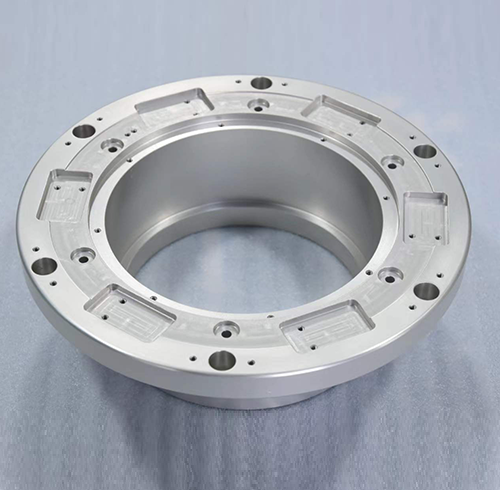豆传媒剧在线mv在线观看|传媒剧在线mv入口|9传媒剧在线mv在线看|豆传媒剧mv入口在线看|豆传媒剧在线观看免费|爱豆传媒剧情在线观看Hello, welcome to Dalian Kaide Precision Machinery Co., Ltd!

Dalian Kaiman Technology Co., Ltd
Dalian Kaide Precision Machinery Co., Ltd
豆传媒剧在线mv在线观看|传媒剧在线mv入口|9传媒剧在线mv在线看|豆传媒剧mv入口在线看|豆传媒剧在线观看免费|爱豆传媒剧情在线观看Contacts:Sun Zong
豆传媒剧在线mv在线观看|传媒剧在线mv入口|9传媒剧在线mv在线看|豆传媒剧mv入口在线看|豆传媒剧在线观看免费|爱豆传媒剧情在线观看Mob:+86-13555929577
豆传媒剧在线mv在线观看|传媒剧在线mv入口|9传媒剧在线mv在线看|豆传媒剧mv入口在线看|豆传媒剧在线观看免费|爱豆传媒剧情在线观看Tel:+86-0411-88026630
Email:dlkdjmjx@163.com
豆传媒剧在线mv在线观看|传媒剧在线mv入口|9传媒剧在线mv在线看|豆传媒剧mv入口在线看|豆传媒剧在线观看免费|爱豆传媒剧情在线观看URL:7seas-education.com
豆传媒剧在线mv在线观看|传媒剧在线mv入口|9传媒剧在线mv在线看|豆传媒剧mv入口在线看|豆传媒剧在线观看免费|爱豆传媒剧情在线观看Add:Fuquan Construction Group Hospital, Zhanqian street, Jinzhou District, Dalian
In precision machining in Dalian, the selection of cutting tools directly affects machining accuracy, efficiency, and cost. It is necessary to comprehensively consider multidimensional factors such as workpiece material characteristics, processing technology types, precision requirements, equipment performance, and economy, and follow the principle of "matching priority, efficiency and life balance". The following are specific selection methods and key points:
1、 Tool selection based on workpiece material
1. Steel materials (steel, cast iron, etc.)
Low carbon steel (≤ 30HRC):
High speed steel (HSS) tools (such as coated HSS Fried Dough Twists drills) can be selected for rough machining, which is low in cost and good in toughness;
Hard alloy cutting tools (such as TiN coated end mills) are recommended for precision machining to improve surface smoothness.
Medium high carbon steel/quenched hard steel (>30HRC):
Before quenching (≤ 45HRC), use ultra-fine grain hard alloy cutting tools (containing TaC/NbC additives);
After quenching (>50HRC), PCBN (cubic boron nitride) cutting tools or ceramic cutting tools (such as Al ₂ O3 based ceramics) are used, with a hardness of HV3000 or above and high temperature wear resistance.
Cast iron (grey cast iron, ductile iron):
Priority should be given to K-type hard alloys (YG6X, YG8) with good resistance to chipping and cutting;
Use metal ceramic cutting tools (such as TiC based hard alloys) during high-speed machining (>500m/min) to reduce bonding wear.
2. Non ferrous metals (aluminum, copper, titanium alloys, etc.)
Aluminum alloy (low hardness, high plasticity):
Prohibit high-speed steel cutting tools (easily sticky tools) and use diamond coated tools or PCD (polycrystalline diamond) tools with sharp edges and smooth surfaces to reduce cutting resistance;
Recommend short edge end mills with helix angles of 30 ° -45 ° to reduce cutting heat.
Titanium alloy (high hardness, low thermal conductivity):
Choose WC based hard alloy cutting tools (such as YW universal alloys), with TiAlN or AlCrN coating being preferred (high temperature oxidation resistance>1100 ℃);
Avoid using cobalt containing cutting tools (cobalt is prone to chemical reactions with titanium), and use ceramic cutting tools (such as Si ∝ N ₄ - based ceramics) to lower the cutting temperature.
Copper alloy (easy to cut but prone to deformation):
High speed steel cutting tools are sufficient for ordinary brass;
High hardness bronze (such as beryllium bronze) requires hard alloy cutting tools, with the cutting edge ground to a large rake angle (15 ° -20 °) to reduce cutting force.
3. Difficult to process materials (high-temperature alloys, composite materials, etc.)
High temperature alloys (such as Inconel718, Hastelloy C):
Mainly choose ceramic cutting tools (such as Al ₂ O ∝+TiC composite ceramics) or PCBN cutting tools, combined with negative rake angles (-5 ° to -10 °) to enhance blade strength;
Adopting the "low-speed large feed" strategy to avoid tool softening caused by excessive cutting temperature.
Carbon Fiber Reinforced Polymer (CFRP):
Use PCD cutting tools or diamond coated hard alloy cutting tools, with sharp and burr free edges (edge radius<5 μ m);
During milling, a stepped tool structure is used to reduce delamination defects through layered cutting.
2、 Tool type selection based on processing technology
1. Turning machining
Outer circle/end face turning:
Choose hard alloy machine clamp cutting tools (such as CNMG and DNMG blades) for general scenarios, which are easy to replace;
Precision machining (such as aerospace shaft parts) uses integral diamond cutting tools to achieve nanoscale surface roughness (Ra<0.02 μ m).
Internal hole turning:
For deep holes (with a length to diameter ratio greater than 5), use an anti-seismic tool holder and a hard alloy blade, and the inside of the tool holder can be cooled with coolant;
Precision small holes (diameter<3mm) are drilled with a solid hard alloy boring tool and aligned with an electron microscope.
2. Milling processing
Flat milling:
Choose a hard alloy face milling cutter with a diameter of 50-200mm for large flat machining, and use a spiral blade design to reduce impact;
High precision flat surfaces (such as guide rail surfaces) are achieved with ceramic face milling cutters and micro lubrication (MQL) to achieve a mirror effect.
Mold cavity/contour milling:
Five axis ball end milling cutters (made of hard alloy or PCD material) are used for complex cavity machining, and the tool helix angle is adjusted according to the material (large helix angle for aluminum alloy and small helix angle for steel parts);
Thin walled milling uses variable pitch end mills to reduce resonance and improve chip removal efficiency.
3. Hole processing (drilling, reaming, boring)
Drilling:
Cobalt containing high-speed steel Fried Dough Twists drill for ordinary steel parts (Co content is 8% -10%, improving red hardness);
For deep hole drilling (hole depth>5 times diameter), use a gun drill (BTA system) or a hard alloy U-drill, and the internal cold hole design ensures smooth chip removal.
Articulated hole:
Precision holes (IT6-IT7 precision) are drilled with hard alloy reamers, with a blade width of 0.01-0.03mm and optional TiCN coating to reduce friction;
Non circular holes (such as elliptical holes) can be fitted with high-precision diamond reamers through micro grinding.
4. Thread processing
Tapping thread:
Spiral groove tap for steel parts (smooth chip removal), extrusion tap for aluminum alloy (no cutting, reducing material tearing);
Coated taps (such as TiAlN coating) are used for difficult to machine materials such as high-temperature alloys to improve wear resistance.
Milling threads:
For large-diameter threads (>M30), a hard alloy thread milling cutter is used to achieve one-time forming through arc interpolation, with higher accuracy than tapping.
3、 Optimization of tool parameters based on machining accuracy and surface quality
1. Geometric parameter selection
Front corner (gamma ₀):
Soft materials (such as aluminum alloys) should have a large rake angle (15 ° -25 °) to reduce cutting force;
Take a negative rake angle (-5 ° to -10 °) for hard materials (such as quenched steel) to enhance blade strength.
Posterior angle (α ₀):
Precision machining takes a larger back angle (8 ° -12 °) to reduce friction between the back cutting surface and the workpiece;
Rough machining or intermittent cutting with smaller back angles (5 ° -8 °) to improve tool rigidity.
Blade radius (r ₙ):
Precision machining (such as optical components) requires a cutting edge radius of less than 1 μ m and requires ion beam polishing treatment;
Ordinary processing can take 5-10 μ m, balancing sharpness and durability.
2. Coating technology matching
Low hardness material (<30HRC):
Choose TiN coating (golden yellow, hardness HV2000, friction coefficient 0.4), which has low cost and strong universality.
Medium to high hardness materials (30-50HRC):
Using TiCN coating (blue gray, hardness HV3200, containing carbon elements to reduce friction), suitable for semi precision machining.
High hardness materials (>50HRC) or high-temperature working conditions:
Adopting TiAlN coating (purple black, hardness HV3800, aluminum content 30% -50%, oxidation resistance temperature 1100 ℃) or AlCrN coating (silver gray, hardness HV4000+, strong corrosion resistance).
3. Tool wear monitoring
In precision machining, a tool life threshold needs to be set:
Replace the hard alloy cutting tool when the wear of the back cutting surface VB is ≤ 0.1mm;
PCD/PCBN tool wear is indicated by sudden changes in cutting sound and deterioration of machined surface roughness as replacement signals to avoid excessive wear leading to edge breakage.
4、 Comprehensive consideration based on equipment and economy
1. Machine tool performance matching
Spindle speed:
High speed machine tools (>10000r/min) require HSK tool holders or heat shrink tool holders to ensure dynamic balance (G2.5 level or above);
Low speed heavy-duty machine tools (such as floor boring machines) should choose BT shank or 7:24 taper shank, with priority given to tool rigidity.
Cooling system:
Machine tools with internal cooling function can choose center cooled cutting tools (such as internal cooled drill bits and internal cooled milling cutters), and the coolant pressure needs to be ≥ 3MPa to effectively flush out chips.
2. Balance cost and efficiency
Single piece small batch production:
Prioritize the use of universal cutting tools (such as reversible inserts) to reduce the investment in specialized cutting tools;
Complex shaped parts can be processed using forming tools (such as asymmetric groove milling cutters) to reduce programming and machining time.
Mass production:
Using solid carbide cutting tools or PCD/PCBN cutting tools, although the initial cost is high, the service life is long (such as the PCD milling cutter service life is 5-8 times that of hard alloy), and the overall cost is lower;
Establish a Tool Management System (TMS) to track tool usage through RFID tags and optimize replacement cycles.
5、 Typical Cases and Selection Logic
Case 1: Aerospace aluminum alloy structural components (such as wing ribs, material 7075-T6, hardness 150HB)
Processing requirements: large margin removal (cutting depth 5-10mm)+thin-walled structure (wall thickness ≤ 1.5mm)+surface roughness Ra ≤ 1.6 μ m.
Tool selection:
Rough machining: 25mm hard alloy corn milling cutter (helix angle 45 °, sparse tooth design for fast chip removal), coated with TiN, feed rate 2000mm/min, cutting speed 400m/min;
Precision machining: A 10mm CCD ball end milling cutter with a cutting edge radius of 0.005mm, a helix angle of 30 °, a cutting speed of 800m/min, and a step pitch of 0.1mm, achieving a mirror effect.
Case 2: Automobile gearbox gear shaft (material 20CrMnTi, hardness 30HRC, carburizing 58HRC)
Processing stage: rough machining before carburizing+gear grinding after carburizing+precision boring (with a diameter of 50H7 and a surface hardness of 60HRC).
Tool selection:
Coarse lathe: CBN coated hard alloy cutting tool (blade model CNMG120408-CBN), negative rake angle -5 °, cutting speed 150m/min;
Boring: PCBN boring tool (integral structure), with the cutting edge ground to Ra ≤ 0.2 μ m, matched with internal cold cutting fluid (temperature 5-10 ℃), achieving a tolerance of ± 0.005mm.
Summary of Core Principles
The selection of cutting tools for precision machining should follow the logic of "material determines material, process determines type, precision determines parameters, equipment determines interface, and cost determines strategy". In practical applications, tool performance can be verified through cutting tests (such as single factor variable method), combined with machining data (such as cutting force, temperature, life) to establish an enterprise specific tool selection database, gradually forming a standardized process to improve process stability and production efficiency.


Focus on us
National consultation hotline:
+86-0411-88026630
Tel:+86-13555929577
豆传媒剧在线mv在线观看|传媒剧在线mv入口|9传媒剧在线mv在线看|豆传媒剧mv入口在线看|豆传媒剧在线观看免费|爱豆传媒剧情在线观看Email:dlkdjmjx@163.com
Add:Fuquan Construction Group Hospital, Zhanqian street, Jinzhou District, Dalian